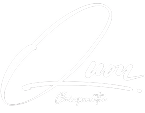NEWEST**** Each degree of lordotic correction added to each millimeter improvement in forward head posture results in faster central conduction processing times— your nervous system is faster and more efficient.
Moustafa et al 2021 Demonstration of central conduction time and neuroplastic changes after cervical lordosis rehabilitation in asymptomatic subjects: a randomized, placebo‑controlled trial. Nature: Scientific Reports
1) An IDEAL NORMAL VALUE for Cervical Spine Curvature mimics a portion of a circle
Harrison, DD, Harrison DE, et al. Modeling of the Sagittal Cervical Spine as a Method to Discriminate Hypolordosis Results of Elliptical and Circular Modeling in 72 Asymptomatic Subjects, 52 Acute Neck Pain Subjects, and 70 Chronic Neck Pain Subjects. Spine 2004.
2) Patients with a clinical loss of neck curve are 18x more likely to have a straight neck or a kyphotic neck and CHRONIC PAIN. Statistically significant association between cervical pain and lordosis < 20 degrees and a "clinically normal" range for cervical lordosis of 31 degrees to 40 degrees. Maintenance of a lordosis in the range of 31 degrees to 40 degrees could be a clinical goal for chiropractic treatment.
McAviney J Determining the relationship between cervical lordosis and neck complaints. J Manipulative Physiol Ther. 2005 Mar-Apr;28(3):187-93.
3) Aberrant Spinal Joint Facet Loading Causes SCLEROTOGENOUS PAIN REFERRAL PATTERNS
Crosby, N. D., Weisshaar, C. L., & Winkelstein, B. A. (2013). Spinal neuronal plasticity is evident within 1 day after a painful cervical facet joint injury. Neuroscience letters, 542, 102–106. doi:10.1016/j.neulet.2013.03.019 https://www.ncbi.nlm.nih.gov/pmc/articles/PMC3662221/
4) This meta-analysis demonstrates a strong relationship between LBP and decreased LLC, especially when compared with age-matched healthy controls. Among specific diseases, LBP by disc herniation or degeneration was shown to be substantially associated with the loss of LLC.
Se-Woong Chun, MD et al Spine Aug 2017 The relationships between low back pain and lumbar lordosis: a systematic review and meta-analysis
5) A restriction in lateral flexion and hamstring range of motion as well as limited lumbar lordosis were associated with an increased risk of developing LBP
Sadler, S. G., Spink, M. J., Ho, A., De Jonge, X. J., & Chuter, V. H. (2017). Restriction in lateral bending range of motion, lumbar lordosis, and hamstring flexibility predicts the development of low back pain: a systematic review of prospective cohort studies. BMC musculoskeletal disorders, 18(1), 179. doi:10.1186/s12891-017-1534-0
6) Spine Deformity has huge influence on your overall health and can predict worse outcomes and chronic conditions compared with outcomes associated with Congestive Heart Failure & Type II Diabetes
Pellisé F et al. Impact on health related quality of life of adult spinal deformity (ASD) compared with other chronic conditions. Eur Spine J. 2015 Jan;24(1):3-11. doi: 10.1007/s00586-014-3542-1. Epub 2014 Sep 14.
7) Correction of the neck curve and anterior head posture was temporally associated with lengthened telomeres, improved nocturnal polyuria, neck and mid-back pain, quality of life, and autonomic nervous system adaptability.
Fedorchuk et al., J Mol Genet Med 2017, Increased Telomere Length and Improvements in Dysautonomia, Quality of Life, and Neck and Back Pain Following Correction of Sagittal Cervical Alignment Using Chiropractic BioPhysics® Technique: a Case Study https://www.omicsonline.org/open-access-pdfs/increased-telomere-length-and-improvements-in-dysautonomia-qualityof-life-and-neck-and-back-pain-following-correction-of-sagittal-1747-0862-1000269.pdf
8) IDEAL NORMAL ALIGNMENT OF THE LUMBAR SPINE
Harrison DD, Janik TJ, Troyanovich SJ, et al. : Comparisons of lordotic cervical spine curvatures to a theoretical ideal model of the static sagittal cervical spine. Spine, 1996, 21: 667–675
9) While CBP® Technique has approximately as much evidence-based support as SMT for neck pain, CBP® has more evidence to support its methods than the Diversified technique taught in chiropractic colleges, but not as much as SMT for low back pain. The evolution of chiropractic specialization has occurred, and doctors providing structural-based chiropractic care require protocol guidelines for patient quality assurance and standardization. A structural rehabilitation protocol was developed based on evidence from CBP® publications
Oakley, P. A., Harrison, D. D., Harrison, D. E., & Haas, J. W. (2005). Evidence-based protocol for structural rehabilitation of the spine and posture: review of clinical biomechanics of posture (CBP) publications. The Journal of the Canadian Chiropractic Association, 49(4), 270–296.
10) Lumbar extension traction in addition to stretching exercises and infrared radiation improved the spine sagittal balance parameters and decreased the pain and disability in CMLBP.
Diab AA, et al. J Back Musculoskelet Rehabil. 2013. The efficacy of lumbar extension traction for sagittal alignment in mechanical low back pain: a randomized trial.
11)Lumbar extension traction with stretching exercises and infrared radiation was superior to stretching exercises and infrared radiation alone for improving the sagittal lumbar curve, pain, and intervertebral movement in CMLBP.
Diab AA, Moustafa IM. J Manipulative Physiol Ther. 2012 May;35(4):246-53. Lumbar lordosis rehabilitation for pain and lumbar segmental motion in chronic mechanical low back pain: a randomized trial.
12) The traction group receiving lumbar extension traction in addition to hot packs and interferential therapy had better effects than the control group with regard to pain, disability, H-reflex parameters and segmental intervertebral movements.
Moustafa IM1, Diab AA. Clin Rehabil. 2013 Jan;27(1):51-62. doi: 10.1177/0269215512446093. Epub 2012 Jun 8. Extension traction treatment for patients with discogenic lumbosacral radiculopathy: a randomized controlled trial.
13) There exist four principal types of non-structural body posture misalignments in the sagittal plane: lordotic posture, kyphotic posture, flat-back posture, and sway-back posture. Each of them can disturb the physiological loading of the musculoskeletal system in a specific way, which may lead to a functional disorder. When planning postural corrective exercises, not only the analysis of muscles in respect to their shortening and lengthening but also their hypoactivity and hyperactivity should be considered.
Czaprowski, D., Stoliński, Ł., Tyrakowski, M., Kozinoga, M., & Kotwicki, T. (2018). Non-structural misalignments of body posture in the sagittal plane. Scoliosis and spinal disorders, 13, 6.
14) X-Ray Imaging is Essential for Contemporary Chiropractic and Manual Therapy Spinal Rehabilitation: Radiography Increases Benefits and Reduces Risks
Oakley, P. A., Cuttler, J. M., & Harrison, D. E. (2018). X-Ray Imaging is Essential for Contemporary Chiropractic and Manual Therapy Spinal Rehabilitation: Radiography Increases Benefits and Reduces Risks. Dose-Response. https://doi.org/10.1177/1559325818781437


